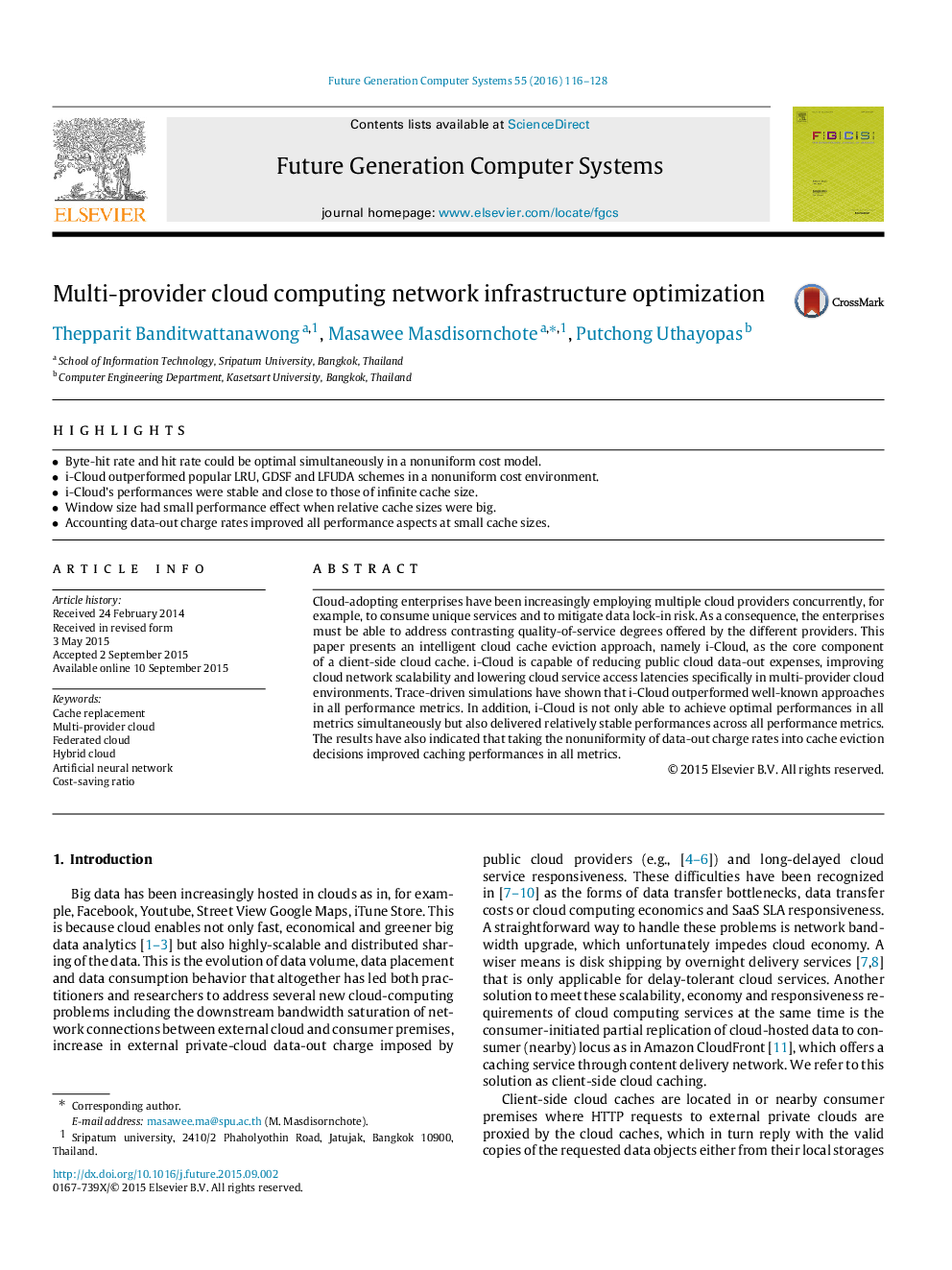| Article ID | Journal | Published Year | Pages | File Type |
|---|---|---|---|---|
| 425563 | Future Generation Computer Systems | 2016 | 13 Pages |
•Byte-hit rate and hit rate could be optimal simultaneously in a nonuniform cost model.•i-Cloud outperformed popular LRU, GDSF and LFUDA schemes in a nonuniform cost environment.•i-Cloud’s performances were stable and close to those of infinite cache size.•Window size had small performance effect when relative cache sizes were big.•Accounting data-out charge rates improved all performance aspects at small cache sizes.
Cloud-adopting enterprises have been increasingly employing multiple cloud providers concurrently, for example, to consume unique services and to mitigate data lock-in risk. As a consequence, the enterprises must be able to address contrasting quality-of-service degrees offered by the different providers. This paper presents an intelligent cloud cache eviction approach, namely i-Cloud, as the core component of a client-side cloud cache. i-Cloud is capable of reducing public cloud data-out expenses, improving cloud network scalability and lowering cloud service access latencies specifically in multi-provider cloud environments. Trace-driven simulations have shown that i-Cloud outperformed well-known approaches in all performance metrics. In addition, i-Cloud is not only able to achieve optimal performances in all metrics simultaneously but also delivered relatively stable performances across all performance metrics. The results have also indicated that taking the nonuniformity of data-out charge rates into cache eviction decisions improved caching performances in all metrics.
